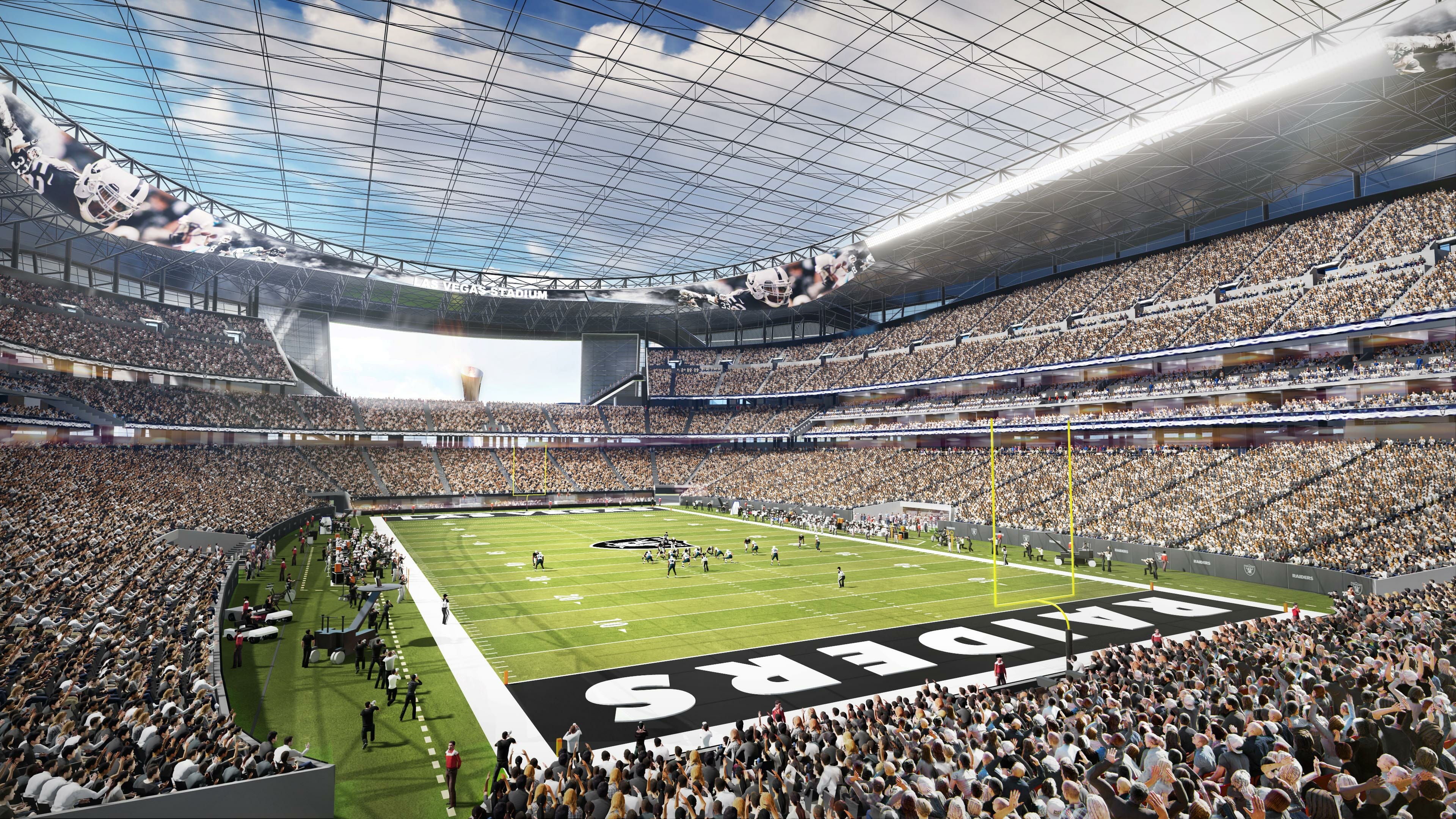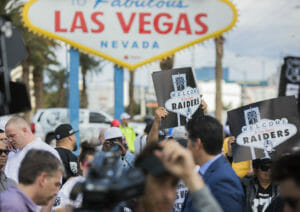Stadium Authority approves lease agreement with Raiders, keeping project on course

One legal document done. Many more to go.
The Las Vegas Stadium Authority today unanimously approved a lease agreement with the Oakland Raiders — days ahead of when NFL owners gather in Chicago. The 73-page document, not including attachments, outlines the parameters of the Raiders’ use of the estimated $1.9 billion stadium.
The vote unleashed hearty applause from dozens of laborers who attended the meeting and witnessed another check off the project to-do list. Steve Hill, who chairs the nine-member Stadium Authority board, summarized the pivotal, albeit expected, action this way:

“Let’s go build a stadium, huh?” he said.
The months-long process kicked into high-gear several weeks ago after the Raiders informed the Stadium Authority that the NFL wanted the document completed in advance of its spring league meeting, which begins Monday. The board spent about a half hour today going through the proposed document one more time before taking a vote.
The 30-year agreement covers everything from naming rights and capital improvements to lease termination and insurance. The team will pay no rent to the Stadium Authority because that would jeopardize the tax-exempt status of the bonds being used for the project.
The lease agreement now needs the NFL’s seal of approval, which could come early next week.
“This was a big step,” Raiders President Marc Badain said after the meeting. “We’ll go to Chicago meetings with the NFL and hopefully get approval on Tuesday.”
Although approved by the Stadium Authority, the lease agreement is conditional upon the completion of multiple other legal documents, including ones that will firm up UNLV’s shared use of the facility and set forth a community benefits plan. The Stadium Authority hopes to finalize — and sign — all project documents by the end of October.
“I just want to make it clear that those agreements are, frankly, equally important to this one,” Hill said.
The finalized lease agreement didn’t contain many significant changes since the board met last week, but don’t expect to find slot machines, poker tables or sports books inside the stadium. The Stadium Authority inserted language into the document that prohibits any gaming and gambling within the planned 65,000-seat stadium located just off the Las Vegas Strip.

Today’s unanimous vote capped off a journey that started rather tumultuously. The Raiders unveiled the initial draft of the lease in late January without showing it to casino mogul Sheldon Adelson, who had pledged $650 million toward the project.
Adelson, chairman and CEO of the Las Vegas Sands, pulled out of the project days later and offered pointed words directed at the team.
“It’s clear the Raiders have decided their path for moving to Las Vegas does not include the Adelson family,” Adelson said in a statement Jan. 30. “So, regrettably, we will no longer be involved in any facet of the stadium discussion.”
The Raiders scrambled to secure a new financial partner. Bank of America eventually agreed to provide a loan for the project and, in late march, the NFL approved the Raiders’ relocation bid to Las Vegas.
“We got to the finish line in time,” Hill said, referring to the lease agreement. “But we didn’t start real well.”
With the lease agreement squared away, attention turns to the other documents and decisions facing the team as the calendar inches closer to summer 2020 — the stadium’s estimated completion date. Site work is expected to begin in December, with construction ramping up in January.
Badain said the team has fielded “advanced interest” from undisclosed entities interested in purchasing naming rights for the stadium. Per the lease agreement, the Raiders will receive all revenue generated by naming rights and signage at the stadium.
Who might be interested? Lots of companies, including those based outside the city’s borders, lured by the Las Vegas Strip’s global appeal and intrigue, Hill said.
“There are so many national brands that have interaction in Las Vegas in a number of different ways,” he said. “I think we’re going to see a broader-than-normal interest in both things like naming rights and advertising.”
Feature photo: Photo rendering courtesy of MANICA Architecture.
